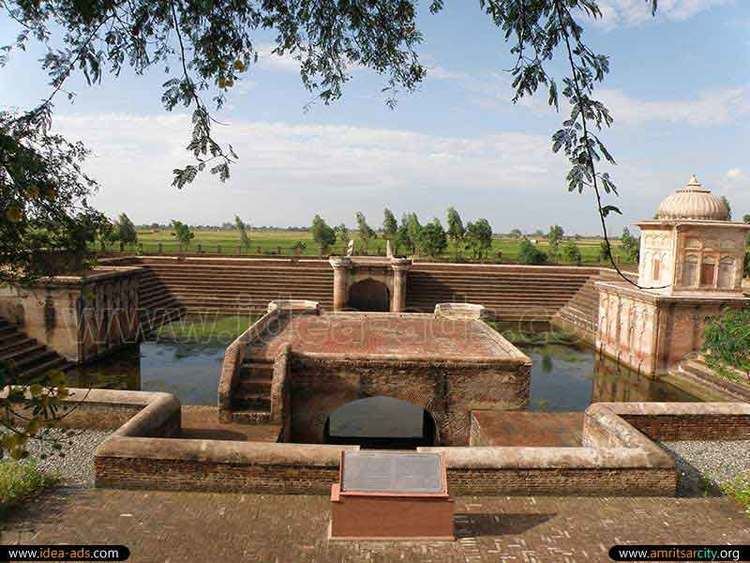 | ||
Weather 22°C, Wind NW at 5 km/h, 63% Humidity | ||
Historical monument pul kanjri just near indo pak border amritsar india
Pul Kanjari is a historical village situated 35 km away from Amritsar on Amritsar-Lahore road, near the villages of Daoka and Dhanoa Kalan on the Wagah border. It is one of the heritage sites built by Maharaja Ranjit Singh, where he used to rest while travelling with his troops. During his reign, Pul Kanjari was an important trading centre. The legend has it that the village was named after a pul (bridge) that was built by the king for a dancer Moran who was of kanjari caste. It is said that one day while crossing the canal one of her shoes fell into the water which vexed her a great deal and a bridge was constructed on her insistence. This fortress also contains a bathing pool, a temple, a Gurudwara and a mosque which were the secular concern of the Maharaja. The village has a monument built in memory of the Jawans who lost their lives in the 1971 war with Pakistan.
Contents
- Historical monument pul kanjri just near indo pak border amritsar india
- The decorations of a temple at pul kanjri village just near indo pak border amritsar india
- History
- Shiv Temple
- Sarovar
- Baradari
- Battle of Pul kanjari
- How to reach
- References

People used to come to Pul Kanjri from far-flung areas, including Amritsar and Lahore, for shopping. The town was inhabited by Arora Sikhs, Muslims and Hindus who lived happily till partition of India. The historical town has been reduced to a tiny village now. Those who survived the bloodbath in 1947 left the place and settled in Amritsar and other places. Some of them come here in mid-August to pay tributes to their ancestors and perform akhand path in the memory of those who had died.
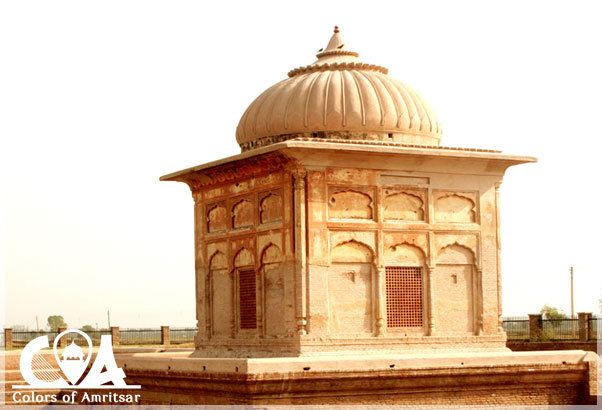
The decorations of a temple at pul kanjri village just near indo pak border amritsar india
History
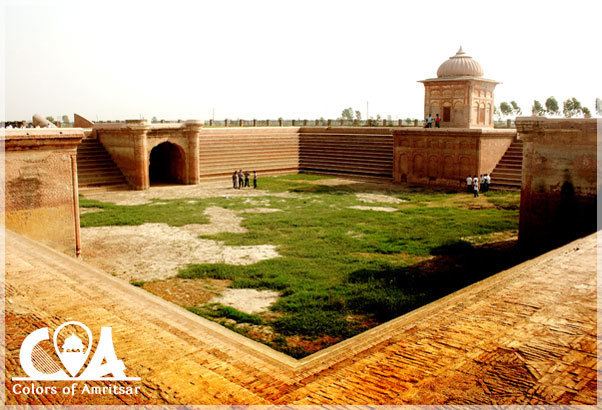
"Moran" was a dancer from nearby village Makhanpura and used to perform in the Royal Court of Maharaja Ranjit Singh. On the way, she had to cross a small canal linked to river Ravi, which was built by the Mughal Emperor Shah Jahan in order to irrigate Shalimar Gardens of Lahore. This canal did not have a bridge. One day while crossing the canal Moran lost her silver sandals that had been presented to her by the Maharaja. Disappointed over the loss, she refused to perform in the court of Maharaja. When the incident was brought to the notice of Maharaja, he immediately ordered the construction of a bridge on the canal. The dancers were not given much respect in those days and they were addressed as “Kanjari”. Hence the bridge constructed to facilitate Moran was known as “Pul Kanjari”.

Now, this historical memorial has been renovated and being preserved by The Ministry of Tourism, Govt. of India and Govt. of Punjab. The Mosque, Mandir, Baradari and a Sarovar have been given a new touch and the place is worth paying a visit.
Shiv Temple
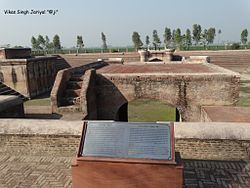
On the right side of the memorial is a Shiv Temple made of Nanakshahi Bricks. Inside on the roof of the temple and sides beautiful fresco work can be seen, which has faded with the passage of time.
Sarovar
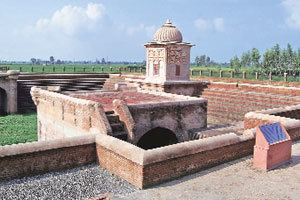
Originally, it was a store house (pool) for the water, but later on the name Sarovar was given to it. The water to the pool was supplied from the nearby canal. There is an open space for the gents to take a dip and a covered one for the ladies, whereas there is a sepBold textope for the animals.
Baradari
The stay house of Maharaja Ranjit Singh known as baradari (the house with 12 doors), is almost in ruins.
Battle of Pul kanjari
Pul Kanjri was captured by the Pakistani army during the Indo-Pak wars of 1965 and 1971, and was recaptured by the Indian Army later. A memorial column, constructed in the memory of the jawans of Sikh regiments, who had recaptured Pul Kanjri from the Pakistani army in 1971, stands as a testimony to the supreme sacrifices.
On December 17th and 18th, 2 Sikh attacked and recaptured the Pulkanjri village. During this attack L/Naik Shangara Singh displayed conspicuous gallantry in clearing two machinegun posts which were holding the attack up. Shangara Singh dashed through a minefield and hurled a grenade at one of the post. He then charged the second gun and leaping over the loophole he snatched the gun from its occupants. As he stood with the gun in his hands he received a fatal burst in his abdomen and fell to the ground with the gun still in his hand. He was awarded a posthumous Maha Vir Chakra. N/ Sub. Gian Singh received a posthumous Vir Chakra. The Pakistanis tried to recapture the Pulkanjri village using a company of 43 Punjab and two companies of 15 Punjab. The Sikhs stood firm and inflicted heavy casualties on the enemy's 15 Punjab. In a local counter attack they captured 1 officer and 8 OR's of 43 Punjab and 4 OR's of 15 Punjab.)
How to reach
It is situated nearly 35 km from Amritsar railway station and 5 km from Indo-Pak border at (Wagah at village Dhanoe Kalan. After crossing Atari from Amritsar side, nearly 500 yards ahead, there is a road on the right, leading to village Attalgarh. After Attalgarh the road ends at Pul Kanjari.)
Known for her interest in art & history and its preservation, Manveen Kaur Sandhu stressed for the need to replace the name “Pul Kanjari” to “Pul Moran” as the word kanjari is taken as an abuse in Punjabi language. At the same time Ms. Sandhu cited that word Kanjari is a mutation of Persian word Kanchani (means dipped in gold and fully blossomed). She cited that it was the quality and behaviour of Moran that brought her near the king.
